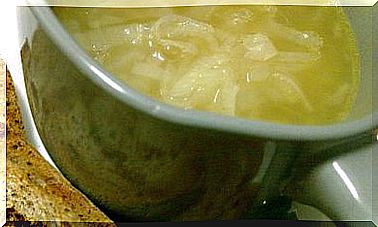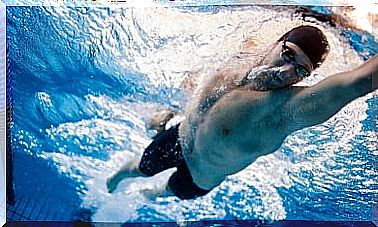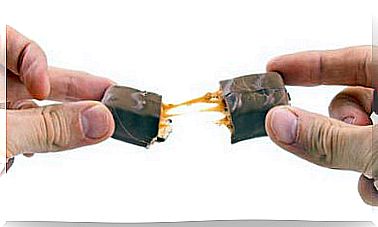Is It Risky To Head A Soccer Ball?
Heading a soccer ball can have neurological consequences over the years. It could even put your health at risk right away.
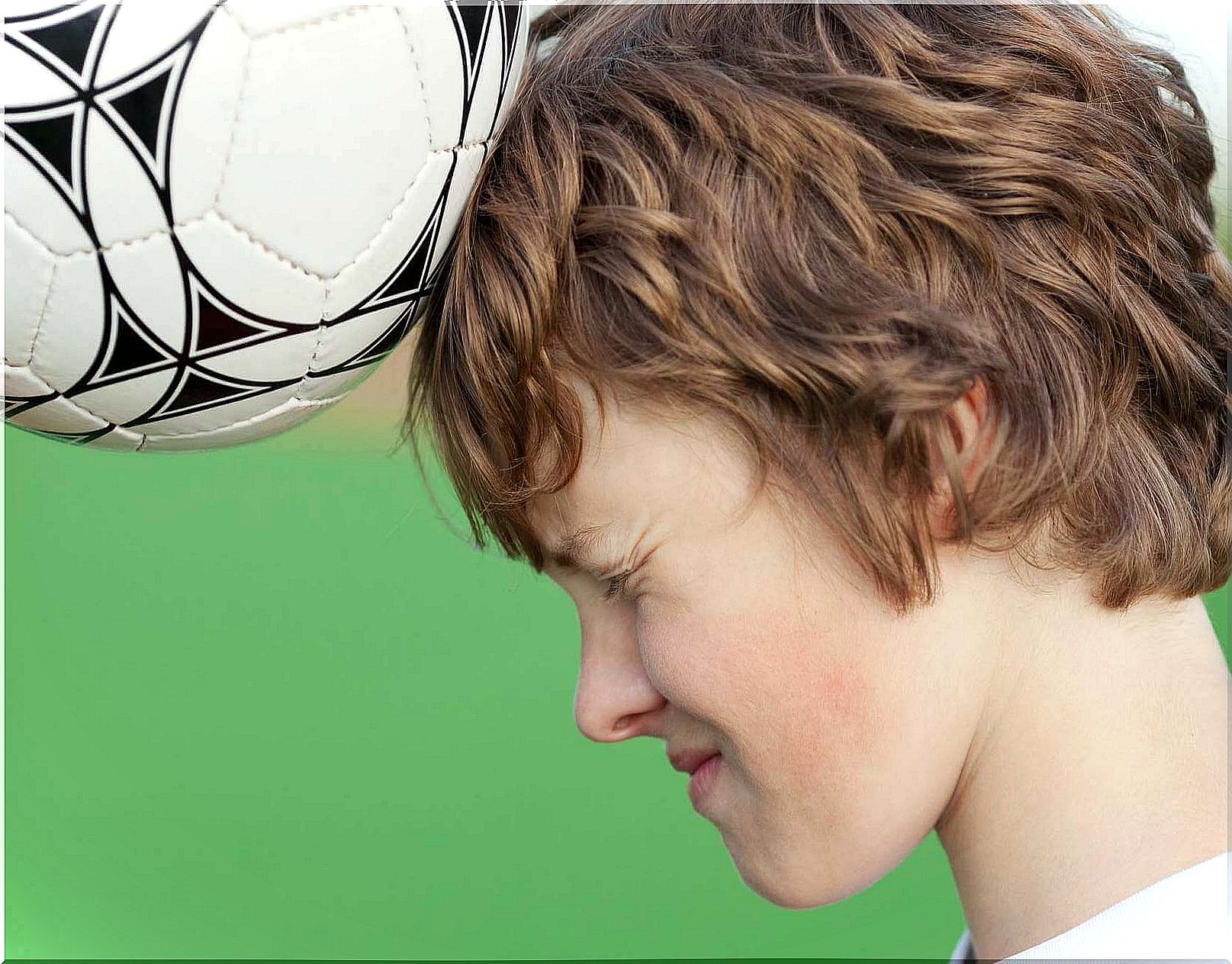
Heading a soccer ball could have serious neurological consequences over the years. According to neurologists, this activity, although not considered “violent”, could cause injuries after several repetitions. However, difficulties rarely present themselves immediately.
The cumulative or repetitive effects of heading over a long period of time could lead to injury and bruising. Also, it could generate pathologies such as chronic traumatic encephalopathies.
Thus, hitting a soccer ball with the head is considered a voluntary brain impact and is considered a very common cause of concussions. In addition, in the long term it could have negative implications on learning, psychomotor speed or memory.
Determining accidents when heading a soccer ball
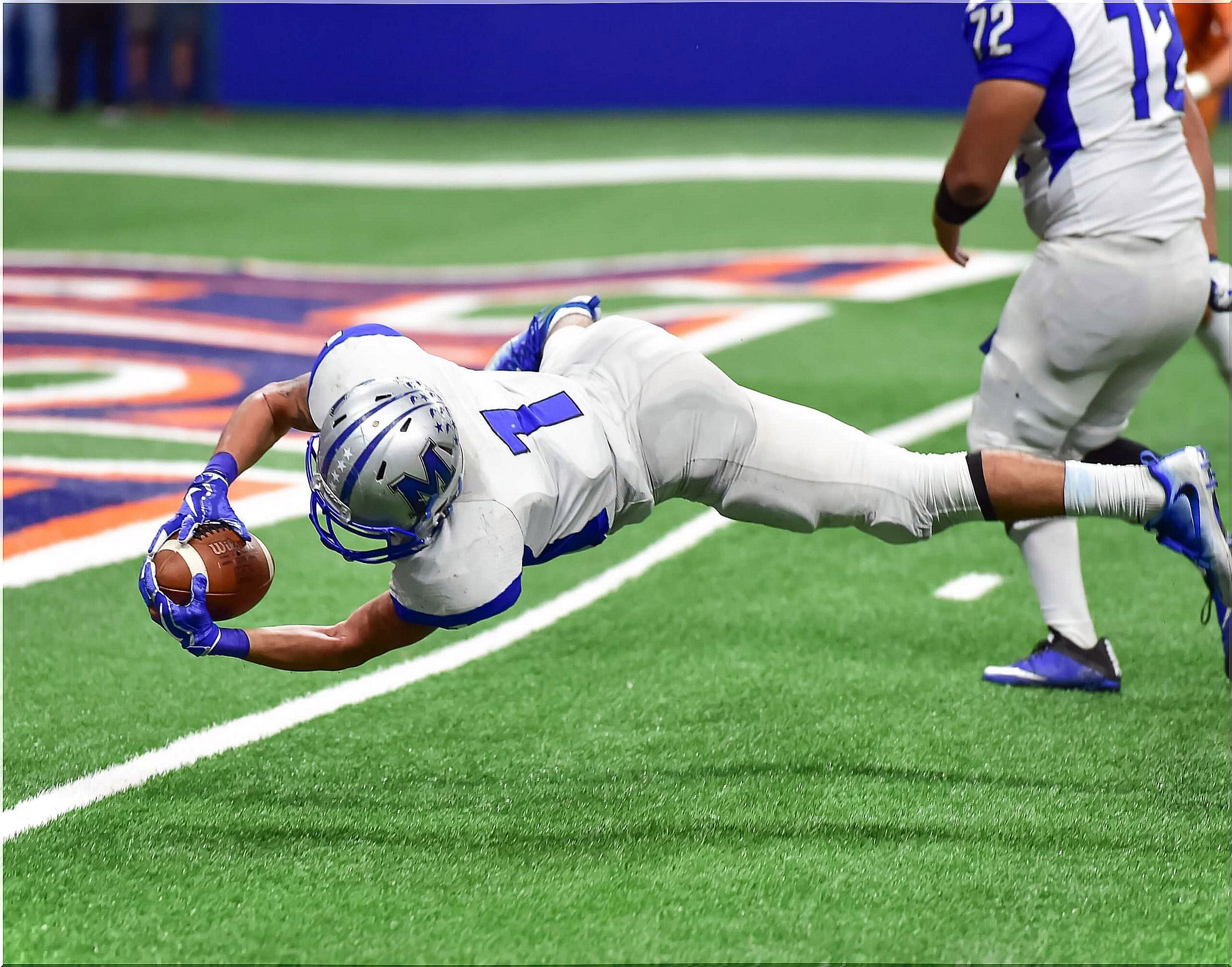
It is not only in soccer practice that the pitching of the ball can occur, as there are similar sports in which accidents due to pitching have occurred. This is the case of American football, ice hockey or boxers players.
It has also been identified that people who suffer car accidents, as well as those who have been victims of family violence, can suffer concussions to the head that, in the long term, can develop into a chronic traumatic encephalopathy like those that occur in practice of football.
Since it is common to see the pitch in many televised games, it is normal to wonder why a single hit could become so delicate. Well, the answer is simple: over time, these blows consecutively atrophy the structures of the skull and make it increasingly susceptible to morphological changes or even internal bleeding.
Recognized cases
One of the most recent and notorious cases is the accident that caused the skull fracture of the Mexican player Raúl Jimenez who, in the middle of the football confrontation of his team Wolverhampton against Arsenal, was involved in a triple head clash when he wanted to defend ball with this area.
Another case occurred in 2017 when Ryan Mason had to retire from football at the age of 25 after he had a clash with Gary Cahill in the game between Hull City and Chelsea. After undergoing surgery, he spent three months in rehab, but was unable to return to the courts.
Precisely, the danger of this injury occurs because the skull, despite being a hard bone, can lacerate little by little until it affects gray matter, a substance that has been compared to gelatin due to its fragility.
What does the research say?
Heading a soccer ball is seen as an infrequent shock, rather than a threat that can put health at risk. In fact, depending on the strength of the impact, it is an action that can be life-threatening at the time it is carried out.
Several studies have established that heading a soccer ball is generally not identified as a cause for medical evaluation of concussion. So much so that the athletes themselves tend to hide the discomfort generated by this action for fear of being removed from the game.
Although this shock does not cause immediate loss of consciousness or amnesia, it could lead to a temporary alteration or decrease in people’s cognitive function. Thus, it is important that when the injury occurs, the person is assessed cognitively, verbally and psychomotorly.
In addition, it is recommended to evaluate your memory; this includes retrograde and antegrade memory. Thus, possible alterations related to the blow can be recognized in order to adequately attend to them.
Possible risks of heading a soccer ball

Below, you will be able to discover some of the possible risks that can be generated when heading a ball. Of course, if you have any questions about this, consult your doctor.
Subconcussive injuries
These types of injuries occur when your head is hit hard, but it is not strong enough to cause serious symptoms or that can leave chronic sequelae. You may experience dizziness, clumsiness, and a moderate headache, all temporarily.
However, some research has sought to determine the changes that may occur in neurocognitive functions depending on the magnitude of one or more subconcussive impacts that may occur in the middle of a children’s soccer game. Although the data have not been conclusive, they have advised the need to visit the doctor after a moderate to severe blow.
Chronic traumatic encephalopathy
According to an article from the University of Applied and Environmental Sciences, chronic traumatic encephalopathy describes brain degeneration caused by repeated head injuries.
Although it is usually very common in those who receive repeated blows to the head, such as soccer players, it is determined during an autopsy by studying sections of the brain.
Bruising
Depending on the blow, it is important to bear in mind that the skull, being exposed to trauma, can bleed internally, a situation known as intracranial hematomas. It is important that you keep this in mind and, in case of a long-lasting headache after a blow, you should see your doctor.
How has it been regulated?
Due to the aforementioned, child soccer players have been prohibited from heading the balls during training sessions. This guideline is given after this practice has been related as a factor in the incidence of brain diseases.
Ban on children and children’s league
To take care of the present and future health due to injuries in children and young people, certain regulations have been adopted to prevent those under 18 years of age from heading a soccer ball. Although there are some exceptions. Within this guideline, it is clarified that those under 12 years of age will be completely prohibited from heading.
Is there a proper technique for heading a soccer ball?
Although the brain consequences of heading a soccer ball cannot be completely avoided, there are some recommendations to reduce the risks:
- Ask your coach to teach you how to head and protect your head. It is important that you know the proper position for your neck and torso to be in order to avoid injury.
- In some variations of soccer or other sports, the use of a helmet or protector is mandatory. When possible, remember to use one that is your size so that your skull is compact and does not suffer from bouncing blows.
Heading a soccer ball
It is important that you take into account the risks and the recommendations that we have given you to head a soccer ball and minimize the risks.
Lastly, if you are one of those players who can’t help but head, use your forehead to take the impact and keep your eyes open. In this way, you will avoid hitting other people or elements.
It is also necessary that you keep your mouth closed, your arms balanced with the rest of your body and your head still. Thus, you will have more stability while looking for the ball in the air.
